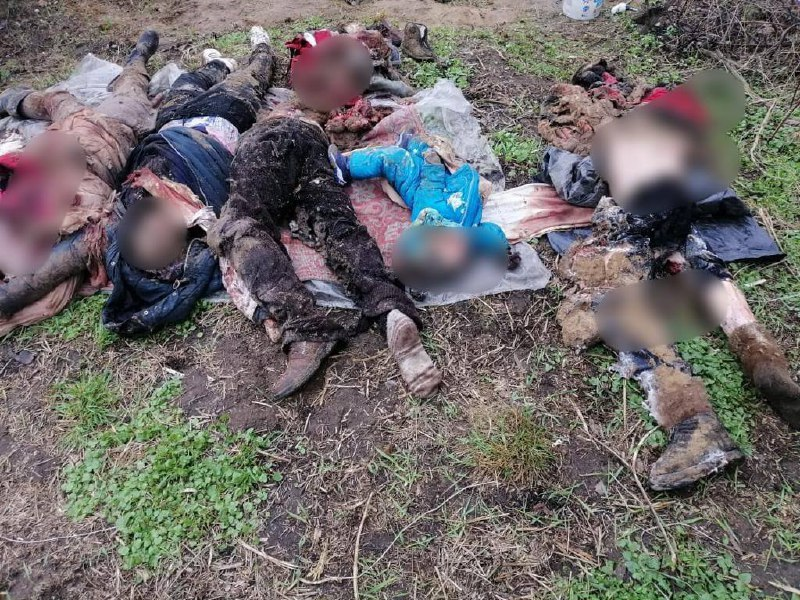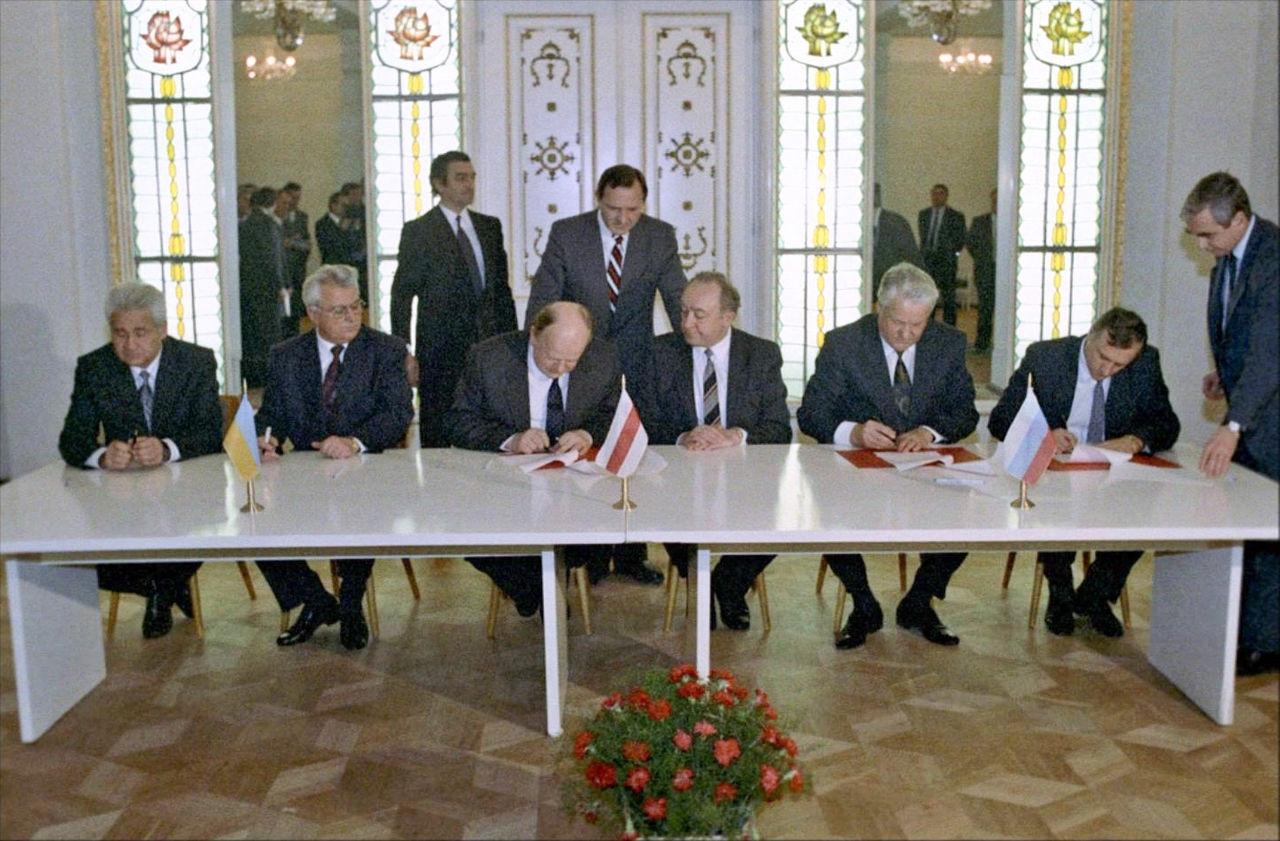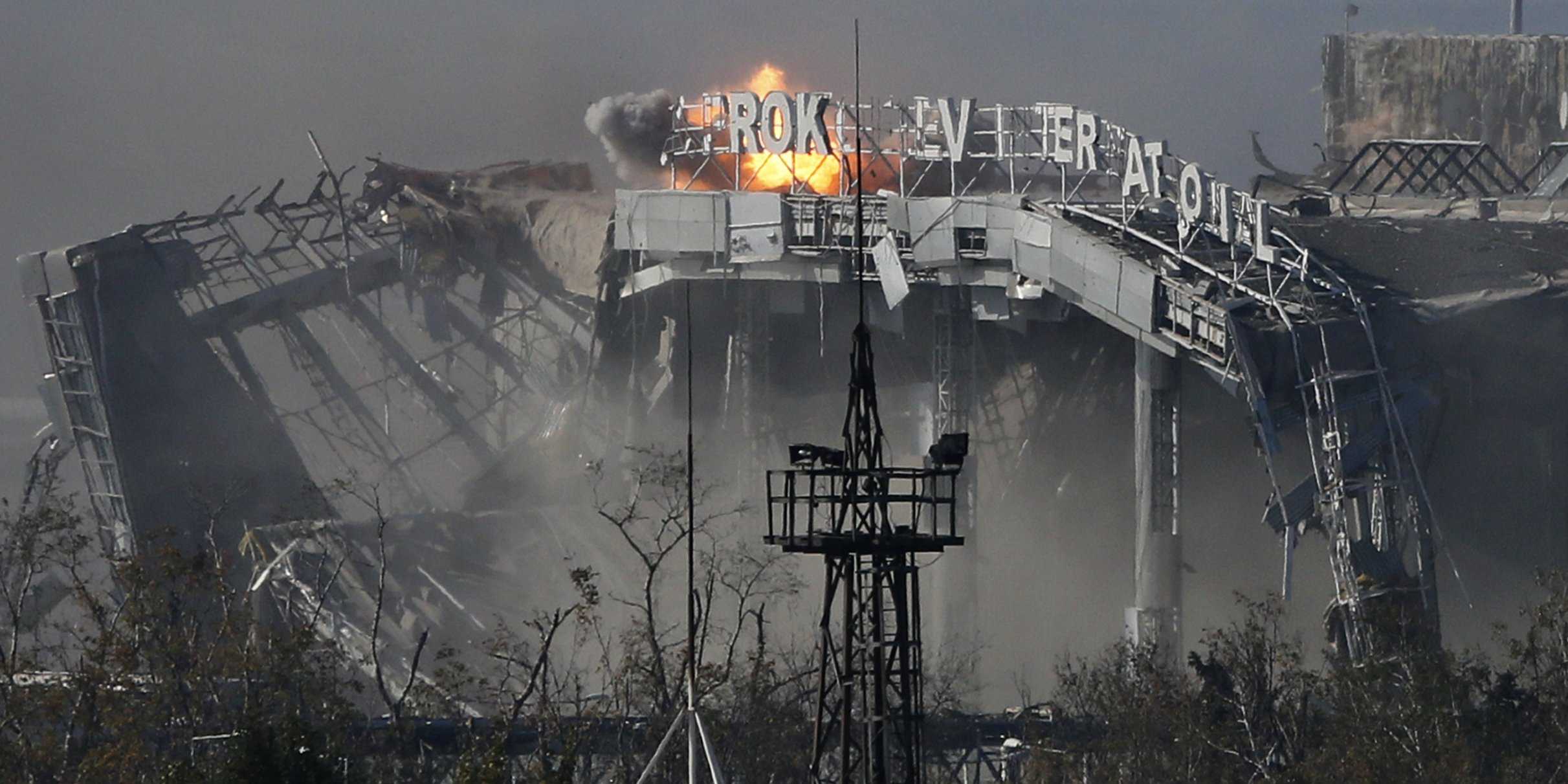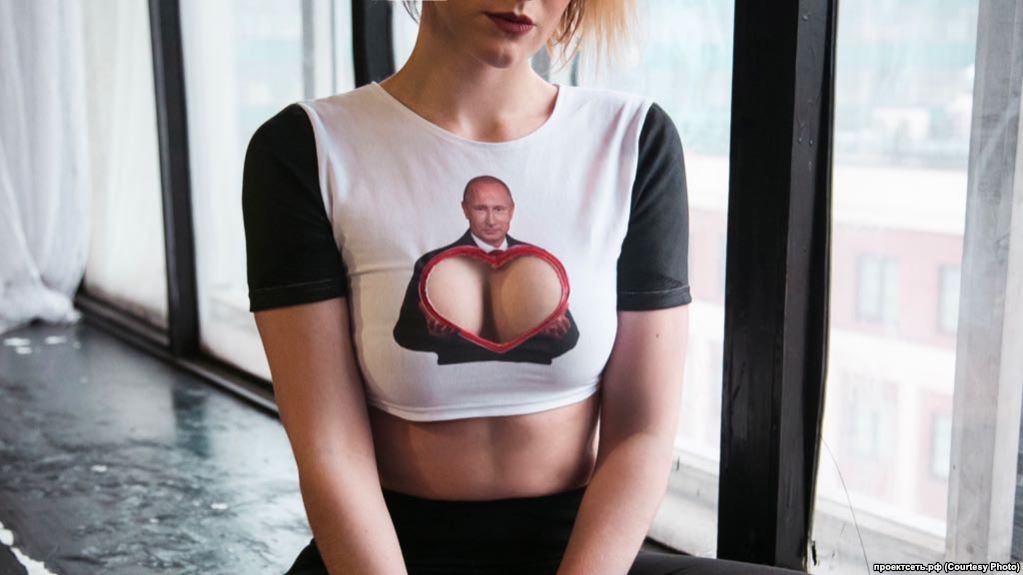On April 3, a day after the world learned about the Bucha massacre, Russian state-owned media RIA Novosti published a text "What Russia Should Do to Ukraine" written by Russian ideologist and political campaigner Timofey Sergeytsev, described on RIA as a “philosopher and methodologist.” The text immediately drew attention as a Russian “Fascist Manifesto.”
Yet one further definition has been applied to this text by prominent American historian and Yale University professor Timothy D. Snyder, a specialist in the history of Central and Eastern Europe and the Holocaust:
“Russia has just issued a genocide handbook for its war on Ukraine. The Russian official press agency "RIA Novosti" published an explicit program for the complete elimination of the Ukrainian nation as such... The Russian handbook is one of the most openly genocidal documents I have ever seen.”
The essence and operations of this strategic text of Russia’s 2022 aggression against Ukraine are best described by the phrase “Nothing is true, everything is possible,” taken from the title of Peter Pomerantsev's book on Russian politics and propaganda. And the “everything” that is “possible” for Russia deserves watchful examination and should be deconstructed step by step.
Step 1. Justifying the Murder of Ukrainians by Equating Them with Nazis
The starting point for the text is to claim that the whole of the Ukrainian society are Nazis:
“De-nazification is necessary when a sizable part of the population - most likely, the majority - has mastered and drawn in the Nazi regime into its politics.”
The text does not explain any of the claims made and raises questions such as how is it possible that more than 20 million people are Nazis in a country in which far-right parties typically fail to draw more than 3% of the vote? The text’s purpose as a manifesto - or, indeed, a genocide handbook - is to provide the instructions:
“The Nazis who took up arms should be destroyed to the maximum on the battlefield. War criminals and active Nazis should be exemplarily and exponentially punished. There must be a total lustration. Any organizations that have associated themselves with the practice of Nazism should be liquidated and banned.
However, in addition to the above mentioned, a significant part of the masses, which are passive Nazis, accomplices of Nazism, are also guilty. They supported and indulged the Nazi government. The just punishment of this part of the population is possible only as bearing the inevitable hardships of a just war against the Nazi system, waged as carefully and prudently as possible in relation to civilians.”
Clear signs of dehumanization are present in the claims that most Ukrainian people deserve the “hardship” of “just war” and even have to be destroyed. Yet the inhumanity of such claims is concealed by equating Ukrainians with Nazis and that is why the word “Nazi” is used in every sentence. As Timothy Snyder comments:
“The genocide handbook explains that the Russian policy of ‘denazification’ is not directed against Nazis in the sense that the word is normally used.
Putin's Russian regime talks of “Nazis” not because it opposes the extreme right, which it most certainly does not, but as a rhetorical device to justify unprovoked war and genocidal policies.”

In Sergeytsev’s text, the concepts of Nazis and Ukrainians are interchangeable. For example, the text equates the very existence of the Ukrainian state with a Nazi regime (“The establishment of a Ukrainian state thirty years ago was the "nazification of Ukraine”) and even openly acknowledges this deliberate word choice by stating that “Denazification will inevitably also be a de-Ukrainization.”
Further Sergeytsev’s synonyms for Nazi and Ukraine include Bandera and Europe. That is, it also states that “de-Banderization” is not enough, and “the denazification of Ukraine is also its inevitable de-Europeanization.”
As Timothy Snyder writes about the fundamental reasons to use the word “Nazi”:
“On this absurd definition, where Nazis have to be Ukrainians and Ukrainians have to be Nazis, Russia cannot be fascist, no matter what Russians do.This is very convenient. Since for the Kremlin being a Nazi has nothing to do with fascist ideology, swastika-like symbols, big lies, rallies, rhetoric of cleansings, aggressive wars, abductions of elites, mass deportations, and the mass killing of civilians, Russians can do all of these things without ever having to ask if they themselves on the wrong side of the historical ledger.”
Step 2. Outlining a Detailed Plan for the Destruction of Ukrainians and the Ukrainian State and Genocide in Ukraine
As during the Soviet repressions, Russian propaganda divides Ukrainians into those who must be killed (either immediately or slowly through forced labor) and those who still can be “re-educated,”-i.e. “cleansed” from the Ukrainian identity and subjugated to Russian imperialist identity.
First, we consider “the elite”, people active in political and cultural matters. Sergeytsev insists this group“must be liquidated, its re-education is impossible.”
- lustration, publication of the names...involving them in forced labor to restore the destroyed infrastructure as punishment (who will not be subject to the death penalty or imprisonment);
- liquidation of any armed formations of Ukraine, including the Armed Forces of Ukraine”
The text admits that the destruction of pro-Ukrainian politicians, intellectuals, authors, activists, etc. would not be sufficient and details repressions necessary to prevent uprising through strict censorship and permanent Russian presence in Ukraine “for a period of 25 years” as well as control over entire spheres of public life. It lawlessly calls for: “normative acts of denazification "from below”; the “creation of permanent bodies” “in the peacetime”; and “integration with the Russian departments.”
Raphael Lemkin, who coined the term genocide, wrote in 1944 that genocide is not only the murder of a specific national group but, in the first place, the coercion to give up one's national culture. This is clearly what Sergeytsev and other Russian ideologists mean by “re-education.”
In 1944, Raphael Lemkin defined genocide, the term he invented, as:
“New conceptions require new terms. By "genocide" we mean the destruction of a nation or of an ethnic group (...) Generally speaking, genocide does not necessarily mean the immediate destruction of a nation, except when accomplished by mass killings of all members of a nation. It is intended rather to signify a coordinated plan of different actions aiming at the destruction of essential foundations of the life of national groups, with the aim of annihilating the groups themselves.
The objectives of such a plan would be disintegration of the political and social institutions, of culture, language, national feelings, religion, and the economic existence of national groups, and the destruction of the personal security, liberty, health, dignity, and even the lives of the individuals belonging to such groups. Genocide is directed against the national group as an entity, and the actions involved are directed against individuals, not in their individual capacity, but as members of the national group.”
All the components of genocide listed by Lemkin in his definition are complied with in Sergeytsev’s text.
And the whole of society, according to Sergeytsev’s “genocide handbook,” should forget the Ukrainian identity and accept the coerced Russian identity by “deployment of the Russian information space”, “withdrawal of educational materials, and prohibition of educational programs at all levels.” Historical memory is called dangerous.
Russian occupiers launch war on Ukrainian history, burning books and destroying archives
“Further denazification of the mass of the population consists of re-education, which is achieved by ideological repression (suppression) of Nazi attitudes and strict censorship: not only in the political sphere, but also necessarily in the sphere of culture and education. The duration can in no way be less than one generation, which must be born, grow up and reach maturity under the conditions of denazification (...),” Sergeytsev says.
Ukraine is at considerable risk for genocide according to tools to assess the threat of genocide developed in the field of genocide studies. The director of the Center for the Study of Genocide and Human Rights and Distinguished Professor of Anthropology Alexander Hinton writes the destruction of culture, one of the leading signs of genocide, is apparent in Ukraine at the hands of Russian invaders:
“Russia seeks to seize and Russify Donbas and other parts of the east of Ukraine, where, if Putin is taken at his word, an “imaginary” Ukrainian identity will be erased.
Given the scale of Russian violence in Ukraine, however, genocide warnings need to be taken seriously”.
Sergeytsev is not alone in his views. They echo Putin's February 22 speech and his article on the alleged historical unity of the Ukrainian and Russian people. On March 2, 2022 RIA also published a text with similar imperialist and colonial ideas by “journalist and dramaturgist” Viktoriya Nikifarava:
“It is necessary to save the Ukrainians from themselves, not lisping with patients and not looking back at the "world community", which still dreams of destroying us.”
Among her other nonsensical ideas lies the quote:
Trending Now
“Ideally, it would be good to create one history textbook in general and offer it to students both for us and for them...In the manner of China it is needed to clean up the [Ukrainian] Internet from all this rubbish.”
Step 3. Uniting Russians by Denying the Existence of Independent Ukraine and Pushing the Idea of Russian “Unique Mission” in the West
The text further aims to unite Russians through a sense of righteousness in their crimes against the independent state by assertions that they are “winners” who have both “absolute control” over the “denazification process” and the “power to ensure it.” The “loser” is said to be guilty (of being Ukrainian) and any other views are precluded by claims that “the ideology of the denazifier cannot be disputed” and that “the denazified country cannot be sovereign.”
The text states that since 2014 - due to Russia’s war against Ukraine - Russian society achieved “internal cohesion and a conscious unambiguous mass refusal to maintain any unity and connection with Ukraine.”

Many disgraceful epithets are used in the text toward the Ukrainian state: it is accused of imaginary “amorphousness and ambivalence,” the text calls the very independence of Ukraine Nazism, and it mocks the 'European’ (Western, pro-American) path of ‘development’ (in reality—degradation).”
In line with fascist and genocidal rhetoric, the text published by RIA on 2 March 2022, calls all Ukrainians “mentally unhealthy people” and says that “After the liberation of Ukraine”—Russia calls the occupation of Ukraine ‘liberation’—“a whole range of measures will be required to bring this mentally unhealthy people to their senses.”
The text calls for the complete destruction of the Ukrainian state: “the name ‘Ukraine’ apparently cannot be retained as the title.”
According to Western journalism standards, a voice must be given to two parties. From the Russian viewpoint: Ukraine does not exist. Writer Ostap Ukrayinets questions how the dialogue can even be possible in this case, when one party refuses to acknowledge the existence of the other. Dialogue can only work when both parties are ready to listen.
As New Yorker columnist writes:
“By the standard [of the legal definition of genocide], Putin’s war of obliteration comes readily into focus as genocidal, if not—to date, anyway—as comprehensive genocide. His apparent objective is to extinguish Ukraine as an independent nation...
[In his speech in February 2022 Putin said] 'Like it or not, take it, my beauty.' The line was immediately recognized as a reference to a luridly menacing song about necrophiliac rape by the punk band Red Mold. The Kremlin and its press organs airbrushed the taunt out of the official transcripts. But Putin had made himself clear: he viewed Ukraine as a corpse, and would have his way with it.”
https://twitter.com/EuromaidanPress/status/1514621710124859394
As for the world’s condemnation of Russia’s colonial politics, it gives Sergeytsev even further grounds to unite Russian society against its alleged most important enemy, the West:
“Russia will have no allies...Since this is a purely Russian business. [Not just] Ukraine will be eradicated, but including, and above all, Western totalitarianism, the imposed programs of civilizational degradation and disintegration, the mechanisms of subjugation to the superpower of the West and the United States.”
Indeed, independent polls show that Russians believe they fight NATO and the US in Ukraine, not Ukraine itself. This is despite the fact that NATO has not sent its troops to Ukraine or imposed the no-fly zone Ukraine requested, reminding the West of the security guarantees of the Budapest Memorandum.
The text brags about the exceptional role of Russia in “saving” the West:
“Russia did everything possible to save the West in the 20th century...The last act of Russian altruism was the outstretched hand of friendship from Russia, for which Russia received a monstrous blow in the 1990s”
That is, it is not only Ukraine that Russia plans to “liberate” and “re-educate.” Ukraine is just an intermediary stop on its way westward, as Russian propagandists claim. Based on history, the Russian empire would spread much further if Ukraine had not persistently stopped Russia’s movement west. Unlike the Baltic states and states of the Warsaw Pact, European countries never experienced a prolonged period of Russian occupation or influence. “Conclusions” Russia draw about the states it occupied include claiming that they were once one nation. Claiming that Ukraine and Russia are one nation is analogous to stating that Russia and Finland or Estonia are one nation, though it, as is the case with Ukraine, was never true.
Further Arguments Proving Russia Is Committing Genocide in Ukraine in 2022
According to the United Nations Convention on the Prevention and Punishment of the Crime of Genocide,
“Genocide means any of the following acts committed with intent to destroy, in whole or in part, a national, ethnical, racial or religious group, as such:
- (a) Killing members of the group;
- (b) Causing serious bodily or mental harm to members of the group;
- (c) Deliberately inflicting on the group conditions of life calculated to bring about its physical destruction in whole or in part;
- (d) Imposing measures intended to prevent births within the group;
- (e) Forcibly transferring children of the group to another group.”
Researchers in the genocide studies field point to the deportation of children from Mariupol and Donbas to Russia as well as other measures forcing people to leave their homes, such as mass bombings, especially of essential infrastructure: hospitals, maternity hospitals, kindergartens, residential buildings, as evidence of genocide in Ukraine.
Since Feb 24, Russian forces have killed 6 doctors and 16 more were injured.
— Euromaidan Press (@EuromaidanPress) March 22, 2022
43 ambulances and 135 hospitals were fired by the Russian army. Currently, 9 Ukrainian hospitals have been completely destroyed,–Health Ministry of Ukrainehttps://t.co/UVW5z7N6pN pic.twitter.com/qhSl9Yooyz
Another important argument made by researchers of genocide about the situation in Ukraine is that
“Russia has a long history of mass violence against Ukrainians...Perhaps most infamously, the Soviet Union enacted land policies that prompted a food shortage and a famine, killing millions of Ukrainians from 1932 to 1933. This is known as the Holodomor, a Ukrainian word meaning “death by hunger.[Holod means hunger, and Mor means to force to suffer]”
“Are we reliving 1914 or 1938?” asks the author in the beginning of his essay. The years of Holodomor, 1932-1933, which would be far more appropriate to include here, are conspicuously not mentioned.
The author believes that “both sides” (Ukraine and Russia) are “misusing the term [genocide], albeit for fundamentally different reasons.” The author overlooks the fact that Russia started to use the term “genocide” precisely in order to devalue the term, concealing the history of Russian genocide against Ukrainians in 1932-33. This worked in a similar manner as their use of “Nazi” terminology in the RIA article, as detailed by Timothy Snyder.
In his argumentation the author says he prefers the legal understanding of genocide, and for this reason he cites an international law expert who said, “genocide is, first and foremost, a legal concept.” But it should not be forgotten that genocide did not appear as the legal term but became the legal term similarly to many other concepts.”
The author is right to say that “crimes against humanity encompass a lot more actions and, importantly, do not require targeting against a specific group,” but he makes a mistake when he says that the targeting of “specific groups based solely on their membership in that group” is “not taking place at the moment in Ukraine.” The Russian government and public clearly and unanimously specify the group Russia targets: Ukrainians. In 2022, Russia justifies this with claims that “most of Ukrainians” are Nazis. Previously in the 1900s, Russia justified genocide against Ukrainians by saying that they are kurkuls/kulaks and capitalists. Their de facto target is, and always has been, Ukrainians.
Ang again, in providing examples of genocides throughout history the author does not once mention Holodomor. On the contrary, later in the text the author asserts that whether Holodomor was genocide is “disputed,” falling in line with the Russian narrative of history and its ongoing efforts to dilute historical facts. It is not surprising that an understanding of the Ukrainian historical context is still low in the West, taking into account that before 2014 many people in the West do not know that Ukraine is a separate state and that Ukrainians are a separate people. Because of Ukraine’s recent decolonization, journalists and pundits never learned facts about Ukrainian history. Western academia is still largely dominated by the Russian version of history, which is even corroborated by the organization of bookshelves in most academic libraries around the world, which classify the Ukrainian studies section inside the Russian studies section.
The author also makes an argument about the number of deaths necessary to claim that Russia is committing genocide in Ukraine. Certainly, Russia’s intention was for there to be many more victims, which would have been the case if Ukraine had not resisted so strongly. Should Ukraine be occupied again, the quantity of repressed persons (tortured, killed, murdered) would be undoubtedly enormous.
Euromaidan Press has covered the topic of Holodomor extensively. The guide to our most read-worthy articles on Holodomor is available here.
Read More:
- Russian soldiers gang rape Ukrainian women, including little girls: witnesses of rape survivors
- “They were shot in the back of the head.” Eyewitness account of Russian murder of Bucha residents
- Ukrainian women POWs stand proud with shaven heads after prisoner swap with Russia
- All surveys since start of Ukrainian war show Putin’s standing among Russians up
- Putin’s Big Lie: the “Donbas genocide” and “impending Ukrainian attack”
- Putin’s ‘Z’ symbol echoes Hitler’s swastika in pointing to a final ‘solution’ to 'Ukrainian question'
- War diary: “Terrified of what He saw, God has left Mariupol, my neighbor said
- Russian ideology: imperialism, militarism, and racism





